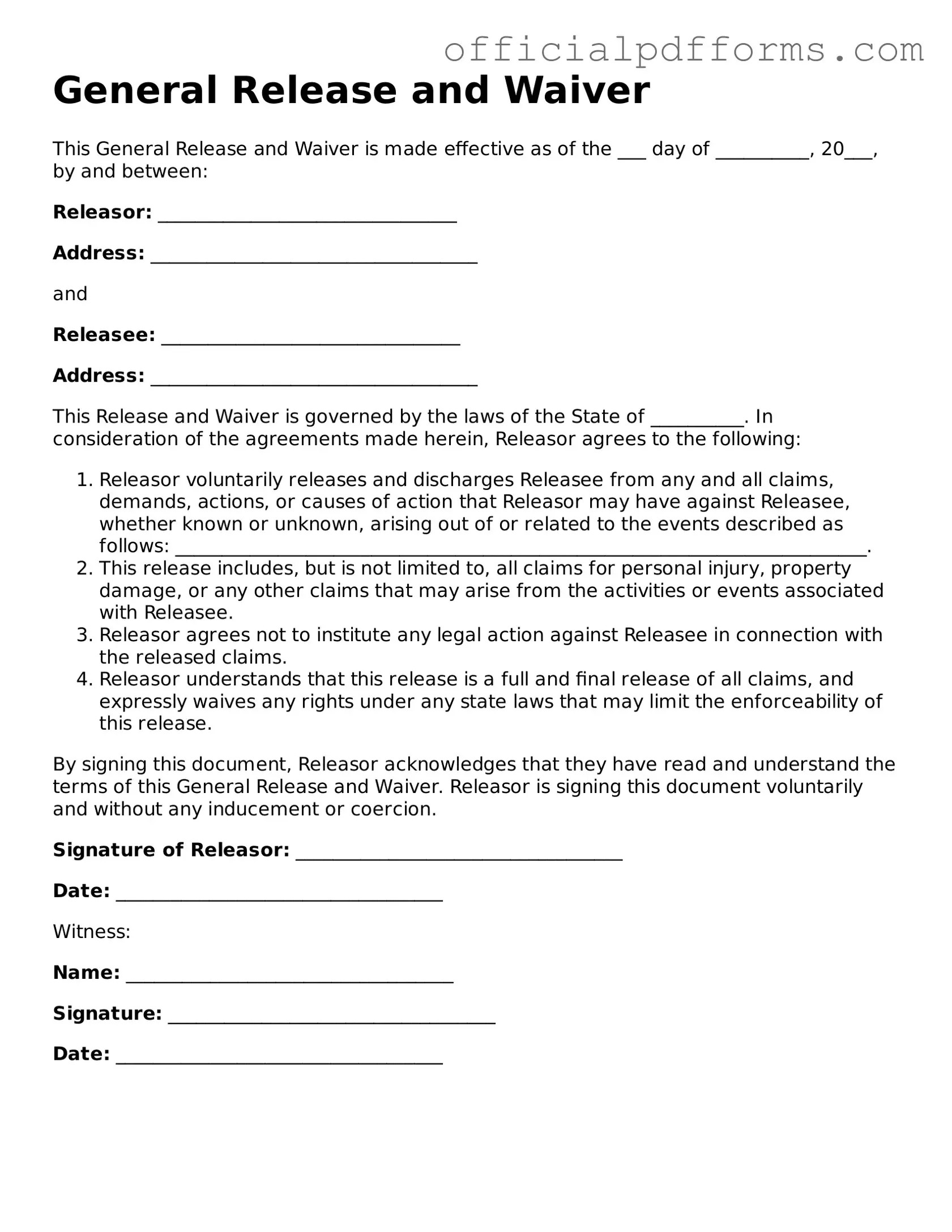A General Release and Waiver form is a legal document that allows one party to release another party from liability for certain claims, injuries, or damages. This form is commonly used in various situations, such as settling disputes or when participating in activities that carry inherent risks.
You should consider using a General Release and Waiver form in the following situations:
-
When participating in recreational activities, such as sports or outdoor events.
-
When settling a dispute or claim with another party.
-
When entering into a contract where one party assumes the risk of certain liabilities.
A typical General Release and Waiver form includes the following components:
-
The names of the parties involved.
-
A clear statement of the release of liability.
-
A description of the activities or claims being waived.
-
The date of the agreement.
-
Signatures of the parties involved.
Yes, a properly executed General Release and Waiver form is generally considered legally binding. However, its enforceability may depend on the specific circumstances and local laws. It is advisable to ensure that the form is clear and comprehensive to avoid potential disputes.
Once a General Release and Waiver form is signed, it is typically difficult to revoke. However, if there are extenuating circumstances, such as fraud or coercion, it may be possible to challenge the validity of the waiver in court. Consulting with a legal professional is recommended for specific situations.
While it is not strictly necessary to hire a lawyer to create a General Release and Waiver form, it is advisable to seek legal counsel, especially if the document involves significant risks or complex legal issues. A lawyer can ensure that the form meets legal standards and protects your interests.
If you do not use a General Release and Waiver form, you may be exposing yourself to liability for claims or injuries that could arise from the activity or situation in question. Without a waiver, it may be more challenging to defend against claims made by participants or other parties.
Yes, there are limitations. A General Release and Waiver form cannot release a party from liability for gross negligence or intentional misconduct. Additionally, certain jurisdictions may have specific laws that affect the enforceability of waivers, particularly in cases involving public interest or consumer protection.
To ensure the effectiveness of your General Release and Waiver form, consider the following:
-
Use clear and unambiguous language.
-
Specify the activities and risks involved.
-
Include a statement indicating that the signer understands the risks.
-
Ensure all parties sign the document voluntarily.
Templates for General Release and Waiver forms can be found through various online legal resources, legal form providers, or through local legal aid organizations. It is essential to select a template that is appropriate for your specific situation and jurisdiction.
